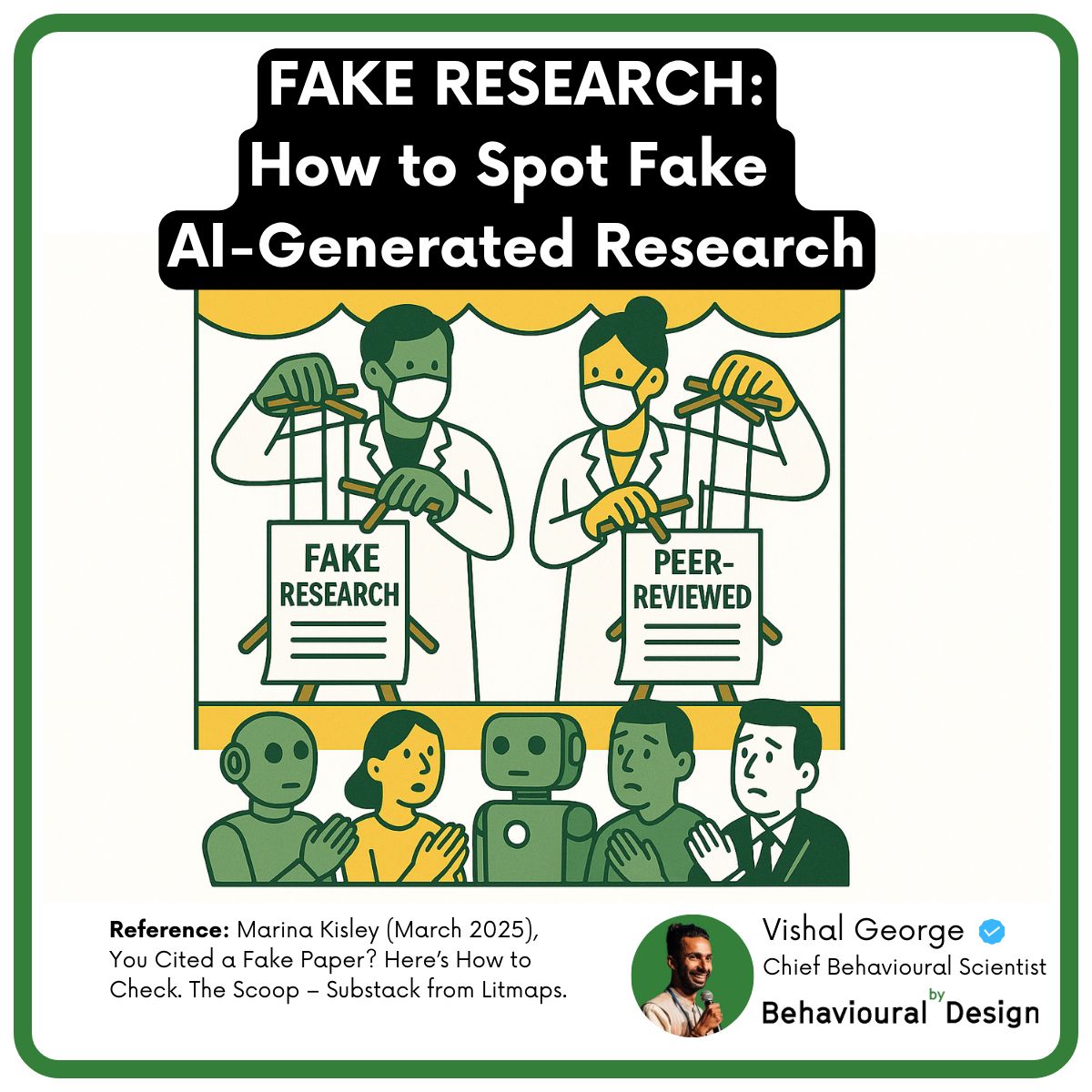
Kia ora, Namaskaram 🙏🏾
Ever cited a paper that turned out to be... fake?
With the rise of AI, paper mills, and shady peer review rings, it's getting harder to tell what’s real and what’s fake.
If you're using AI tools to do literature reviews at speed, you need to watch out for these red flags. In a brilliant Substack piece from The Scoop, Marina Kisley dives into fake research—and I will attempt to summarise this notorious underworld.
But first, what counts as fake research?
This isn’t sloppy science or human errors. It’s scientific fraud —we’re talking about intentional deception in the form of:
Paper mills — scientists buy their way into reputable journals from businesses that churn out fake research papers for a fee.
Fake authors, publications and affiliations — names and academic institutions that don’t exist, or don’t match the field.
Fabricated data and figures — results that were never tested and figures that are copied from other papers.
🧠 Five Signs You’re Looking at Fake Research
Here’s a practical checklist to help you avoid getting duped by fake research:
1. Generic or oddly worded titles
🚩 Fake papers often use broad, awkward, or buzzword-heavy titles to hide a lack of substance.
Example: The Connotation Between Perioperative Glycemic Control Approach and Sternal Wound Infection in Individuals With Diabetes Mellitus Experiencing Cardiac Surgery: A Meta-Analysis
This one is specific sounding — but it still has an oddly worded title. It was found to have a fake peer review and is under investigation.
2. Suspicious peer review process
🚩 Many fakes appear in predatory journals that accept anything for a fee.
🛠 Use these check-lists:
But even reputable journals slip up — so don’t rely on prestige alone.
3. Self-citing, outdated or made up sources
🚩 Citations and references have no clear link or self referenced.
🛠 Visualise citations in Litmaps to see their overall reference and citation counts.
4. Author profiles don’t add up
🚩 Paper mill papers might list fake names, or real people publishing way outside their area of expertise.
🛠 Look up the academics on Google Scholar, ORCID, or LinkedIn.
5. Figures are fabricated or copied
🚩 Look for inconsistencies, reused images, or suspiciously perfect graphs.
🛠 You can also check for retractions on RetractionWatch.
Use this checklist next time you're scanning a paper — especially if you're relying on AI tools to summarise or source academic research.
Use AI to identify fake AI research
Try this prompt:
Act as my research integrity assistant.
I’m pasting a paper below. Highlight any red flags such as vague title, suspicious journal, unusual authorship, questionable references, or reused figures.
Suggest additional tools or methods to verify credibility.
[Insert full paper or abstract]If you’ve got feedback, ideas or reflections on spotting fake research—I’d love to hear from you.
Till next week,
Vishal @ Behavioural by Design
Here are 3 ways you can learn with me: